How to Make Fried Rice Without Soy Sauce
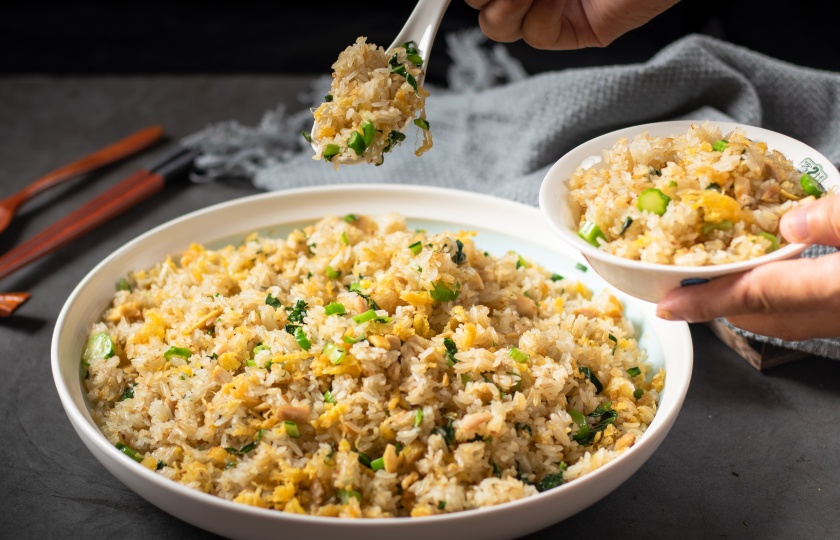
For a light and healthy fried rice, skip the soy sauce and focus on bringing out natural flavors from fresh ingredients. Thoughtful combinations can still deliver a savory and aromatic dish without the heaviness of soy sauce.
How to Make Soy Sauce-Free Fried Rice?
Choosing the Right Rice is Key
Fried rice is best made with leftover rice. Freshly cooked rice has too much moisture, making it stick together and affecting both texture and appearance. Leftover rice is drier, with loose grains that fry more easily and absorb seasonings better, giving the fried rice a chewier texture.
Pre-Treating the Rice is Essential
Before frying, use chopsticks or a spoon to break up the rice thoroughly, especially if it has been refrigerated. Cold rice tends to clump together, and if not broken apart first, it will be difficult to separate while frying, leading to uneven texture. Only when the rice is fully loosened can each grain heat evenly, allowing seasonings to penetrate and enhance the fried rice's flavor.
The Right Heat Brings Out Flavor
Medium-high heat is recommended for fried rice. This ensures the rice grains' surfaces heat up quickly, creating a slight charred aroma—a key to delicious fried rice. High heat also quickly evaporates excess moisture, preventing sogginess while keeping the grains distinct and evenly cooked.
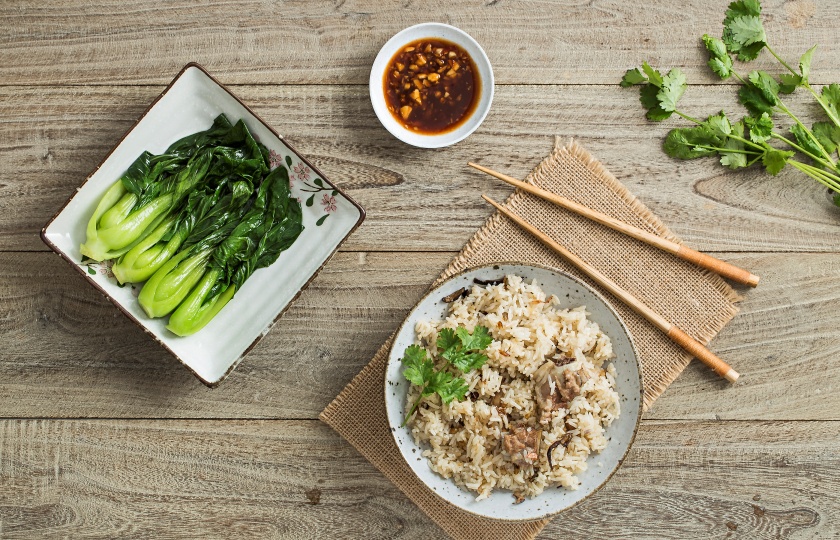
Control the Oil Precisely
Avoid adding too much oil, which can make the rice greasy. Use a spray bottle to control the amount. Gently spray oil onto the pan to coat the bottom evenly. This prevents the rice from sticking while keeping it healthy and flavorful.
Adding Ingredients Wisely
How you add ingredients matters. Don’t dump all the vegetables, eggs, and other add-ins at once; instead, add them in small batches. After each addition, stir-fry well to mix evenly with the rice. Adding too many ingredients at once increases moisture and food volume, potentially making the rice soggy and unevenly mixed.
Seasoning for the Perfect Taste
Seasoning soy sauce-free fried rice takes finesse. Salt is a must for flavor, while black pepper adds depth and richness. A small amount of oyster sauce can provide a soy sauce-like umami flavor without its color, enhancing the fried rice's taste.
Avoid Over-Stirring
Avoid frequent stirring while frying. Excessive stirring can crush the grains and release surface starch, making the rice sticky and affecting texture. Instead, stir quickly and gently, ensuring even heat distribution while keeping the grains intact.
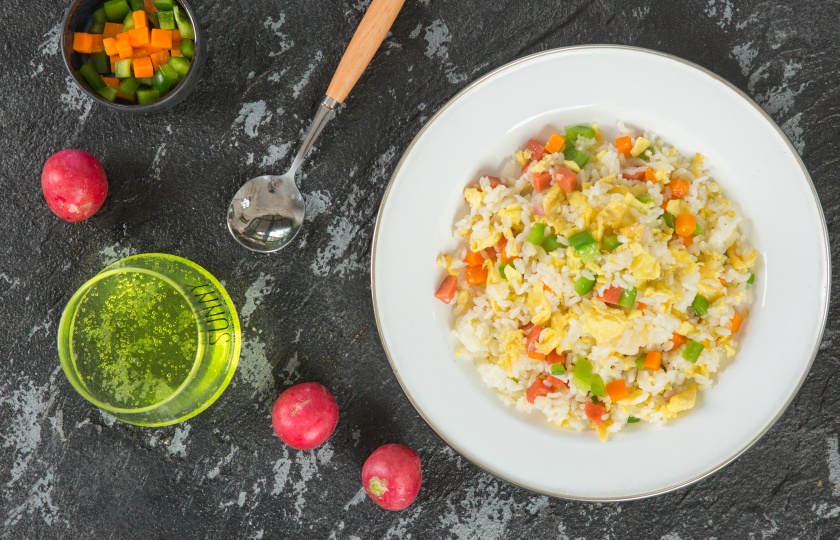
What Kind of Rice is Best for Soy Sauce-Free Fried Rice?
Long-Grain Rice
Rice varieties like jasmine or basmati rice are ideal. With longer grains and less stickiness, they cook into fluffy rice that separates easily when stir-fried. This makes long-grain rice a great choice for soy sauce-free fried rice, as it maintains a light and airy texture without becoming overly sticky like short-grain rice.
Leftover Rice
Regardless of the type, leftover rice is the top choice for fried rice. After a night in the fridge, the moisture content decreases, making the grains drier and less clumpy. This ensures that each grain stays distinct during stir-frying. Freshly cooked rice, on the other hand, tends to be too moist and sticky for frying.
Refrigerated Rice
If leftover rice isn’t available, freshly cooked rice can be cooled and refrigerated for a while. Chilling the rice helps reduce moisture, making it firmer and easier to fry without turning mushy.
Brown Rice or Other Whole Grains
For a more textured fried rice, options like brown rice, black rice, or red rice work well. These varieties have a chewier bite, offering a different experience for those who enjoy varied textures. However, since brown rice absorbs more water, the results may differ slightly, requiring attention to frying time.
In summary, long-grain rice and chilled, leftover rice are the best for soy sauce-free fried rice. They produce fluffy, dry grains that don’t clump, ensuring a perfect fried rice texture.
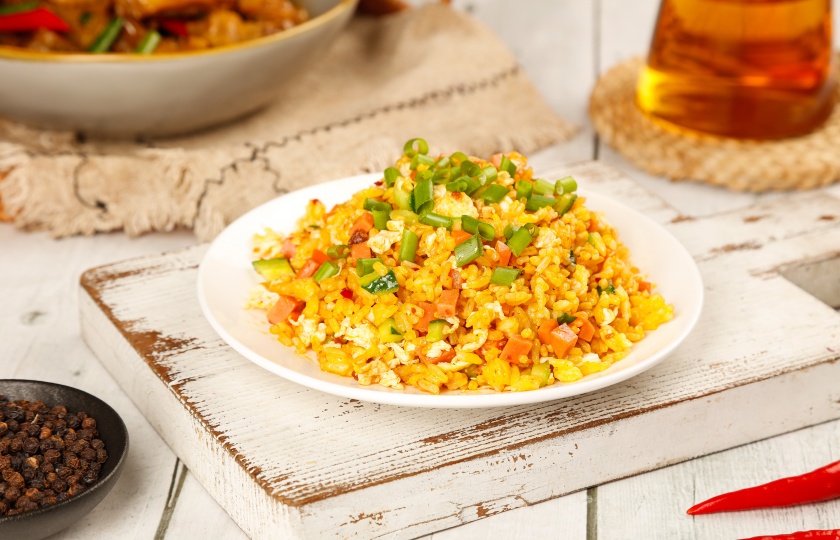
What Side Dishes Pair Well with Soy Sauce-Free Fried Rice?
Stir-Fried Vegetables
Carrots, green peas, and bell peppers are great choices. Their vibrant colors and crisp texture complement the light flavor of soy sauce-free fried rice, adding both nutrition and a delightful crunch.
Boiled Eggs
Simple yet nutritious, boiled eggs offer a soft texture that pairs wonderfully with the fluffy rice. Their mild flavor enhances the dish without overpowering it.
Grilled Chicken Breast
With its lean and subtle taste, grilled chicken breast makes an excellent protein-rich side. It balances the meal with a satisfying yet healthy addition.
Vegetable Salad
A refreshing salad made with lettuce and cucumbers adds a crisp, clean contrast to the fried rice. It’s perfect for cutting through the richness of the dish and keeping the meal light.
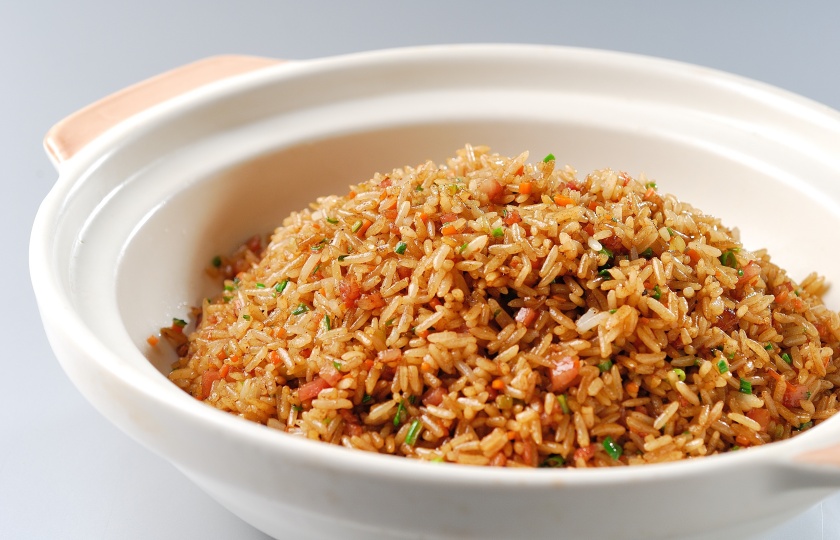
Do Chinese People Add Soy Sauce to Fried Rice?
In China, soy sauce is commonly used in fried rice, especially in classic recipes like Yangzhou fried rice or egg fried rice. It enhances the flavor and adds an appetizing color, making the dish look more appealing.
However, not all fried rice recipes include soy sauce. Some focus on a lighter, natural taste, such as certain home-style or regional fried rice variations. In these cases, other seasonings like salt, pepper, oyster sauce, or chicken bouillon are often used, emphasizing the natural flavors of the ingredients.
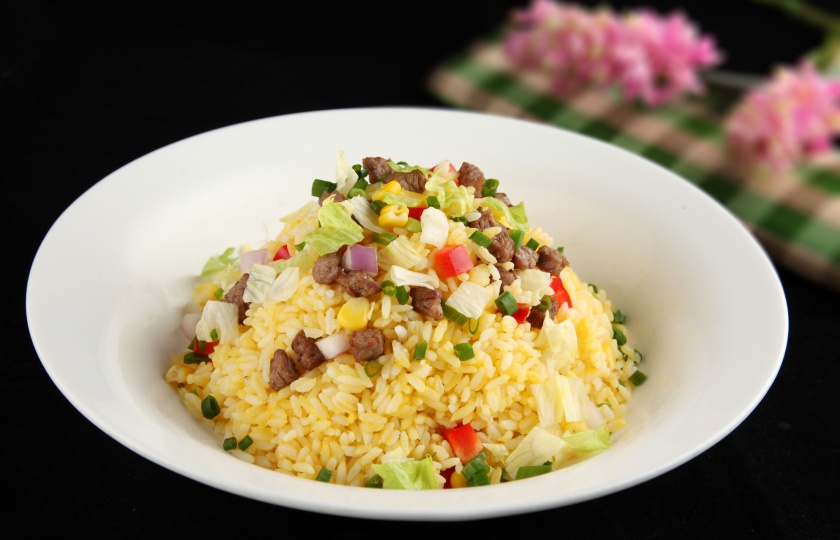
What can be used as a substitute for soy sauce in fried rice?
Oyster sauce: Oyster sauce provides a similar umami flavor to soy sauce but is milder and richer. Adding a bit of it can enhance the fried rice’s taste.
Seafood sauces: Sauces like shrimp paste or clam sauce bring a unique seafood aroma, giving the fried rice a deeper flavor.
Salt and black pepper: For a simpler taste, seasoning with just salt and black pepper works well. This results in a lighter flavor, perfect for those who prefer less intense seasonings.
Rice vinegar or balsamic vinegar: If you want a hint of tanginess, rice or balsamic vinegar can add complexity and a refreshing touch to the dish.
Coconut sauce or powder: For a tropical twist, try coconut sauce or powder, especially for South Asian-style fried rice. These ingredients add an exotic flavor.
Tomato ketchup: To balance sweet and tangy flavors, ketchup works great, especially for tomato-based fried rice. It serves as an excellent soy sauce alternative.
Sauce blends: Mixing a bit of fermented soybean paste, garlic sauce, and chili sauce can create a unique seasoning for fried rice without the overpowering flavor of soy sauce.























